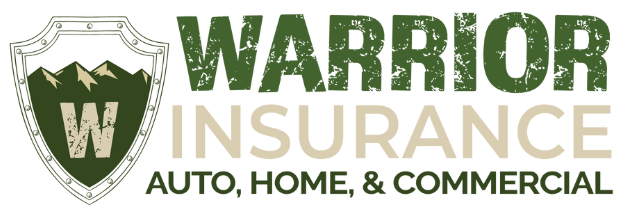Buying a home is one of the biggest financial choices many people will make, so protecting that home matters. That’s where homeowner’s insurance comes in. It’s more than just a backup plan for unexpected events. It’s a smart way to reduce personal losses, protect your investment, and feel secure in your space. Whether you’re buying your first home or switching insurance providers, understanding what goes into a good policy can help make the process smoother.
Living in Colorado Springs comes with unique weather conditions and property risks that should be reflected in your insurance coverage. From sudden hailstorms to wildfires, the area presents challenges that homeowners need to be prepared for. That’s why it’s important to look closely at what’s included in a policy before making your choice. Knowing what questions to ask and what features to look for can save you from future stress.
Evaluating Coverage Needs: What’s Essential For Your Home
Before selecting any policy, it’s helpful to understand what types of protection a standard homeowner’s plan usually includes. Not all homes will need the same level of coverage, but most policies are built around a few basic parts:
– Dwelling coverage: This protects the structure of your house, like the walls, roof, and built-in systems, if they’re damaged by something covered under your policy.
– Liability coverage: If someone gets hurt on your property, this part can help cover legal or medical costs.
– Personal property coverage: This takes care of belongings like furniture, electronics, and clothes if they’re damaged or stolen.
In Colorado Springs, there are some spots where extra considerations make sense. Wildfire damage and hailstorms are common enough that adding extra coverage for those types of events might be worth it. Some neighborhoods might even be in flood-prone zones, which typically aren’t covered by standard policies. If that’s the case, you’ll want to add flood insurance.
Let’s say your home is located near the edge of town and backs up to open fields. In a dry year, that could carry higher wildfire risk. In that scenario, you’d want to make sure your dwelling coverage limit actually matches the full cost to rebuild your home. Too many people stick with a basic amount that doesn’t reflect local construction costs or upgrades.
When you’re sorting through options, don’t guess. Take a full inventory of your space, including remodeling details, detached buildings, and valuable items. Details like these give a clearer picture of what kind of policy you really need and help you avoid gaps that only come up when something goes wrong.
Comparing Providers: What to Look for in an Insurance Company
Finding the right insurance provider can make a big difference in your peace of mind and wallet. It’s wise to weigh more than just premium costs when looking for a provider. Some factors to consider include:
– Reputation: Look for a company with positive reviews and a strong history of customer satisfaction.
– Customer Service: Easy access to help when you need it is important. Check how the provider handles claims and customer inquiries.
– Financial Stability: Make sure the provider has the resources to cover claims, especially during widespread disasters.
– Claims Process: A clear, efficient claims process means getting back to normal faster after a loss.
For example, if two providers offer similar coverage but one has a faster and more transparent claims process, that might tip the decision. Solid customer service and a helpful team can be more valuable in the long term than slightly lower premiums. It’s also smart to ask friends or family who they use or read through community reviews online to get an idea of real-world experiences.
Policy Details: What to Look for in the Fine Print
When going through insurance documents, it’s easy to miss important info tucked into the fine print. These details can change how protected you really are. Here are some key items to look for:
– Exclusions: These are what your policy won’t cover. Make sure to know what’s left out so you’re not surprised after something happens.
– Deductibles: This is the amount you’ll pay before your insurance kicks in on any claim. A higher deductible usually lowers your monthly premium, but make sure it’s a number you’re comfortable paying.
– Coverage Limits: These are maximum amounts your policy will pay out. Limits should match the real value of your home and belongings.
Reading through this part of the policy may not be exciting, but it can make a big difference when you need it. Clear up anything that’s confusing and ask questions if your policy includes unusual language. In places like Colorado Springs where floods or hail might not be covered automatically, checking the exclusions is even more important.
Tips for Saving on Your Homeowner’s Insurance
Saving on homeowners insurance doesn’t have to mean cutting corners. Sometimes it’s just about being smart. Here are a few ideas to help lower costs while keeping solid coverage:
1. Bundle Policies: Many providers lower rates when you combine your home and auto insurance into a single plan.
2. Raise Your Deductible: If you can afford to cover more out of pocket in a claim, you could get a lower premium.
3. Improve Home Security: Burglar alarms, security cameras, and even smart locks and sensors can sometimes lead to discount offers.
4. Ask About Discounts: Insurance companies often have less obvious deals for things like loyalty, good credit, new roofs, or no recent claims.
Also, take time to regularly review your policy with an agent. If you’ve added valuable items or made major upgrades like a new kitchen or deck, your coverage might need an update. And if conditions around your home have changed, like new fire mitigation efforts nearby, it may help qualify you for new savings.
Protecting Your Space with the Right Choice
Picking the right homeowner’s insurance means more than just checking boxes. It’s about feeling confident that your home and everything inside it will be taken care of when the unexpected happens. For Colorado Springs homeowners, that means keeping weather and wildfire risks top of mind and making sure policies cover what truly matters.
Pausing to weigh provider options and read the details in the policy pays off. So do smart choices when it comes to bundling or updating your house with safer features. Making even a few of these moves can give you extra peace of mind.
FAQs
What types of damage are typically covered by homeowner’s insurance?
Most standard policies cover damages from fire, wind, hail, theft, and some water issues. Things like floods or earthquakes need additional coverage.
Can I get a discount for bundling my home and auto insurance?
Yes. Many insurance companies offer lower premiums if you combine your home and auto policies through the same provider.
How can I determine the appropriate amount of coverage for my home?
A good start is estimating the full cost to rebuild your home and replace personal belongings. An agent can help with more detailed calculations.
Are there specific risks in Colorado Springs that I should ensure are covered?
Yes. Wildfires, hail, and flooding are all risks in Colorado Springs. Make sure your policy addresses those where needed.
How often should I review and update my homeowner’s insurance policy?
Check it once a year, especially if you’ve made changes to your property, bought expensive new items, or if local risks have shifted.
Choosing the right coverage is a big step in protecting your home and peace of mind in Colorado Springs. With so many factors to weigh, having a trusted guide can make it easier. If you’re ready to explore your options and learn more about home owner’s insurance designed around your needs, reach out to Warrior Insurance and feel confident in your coverage decisions.

